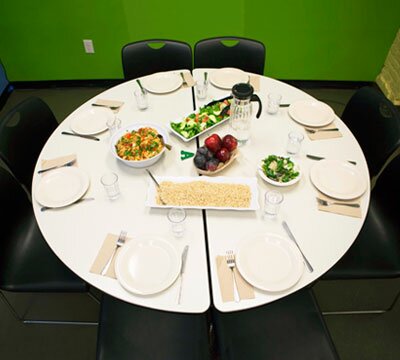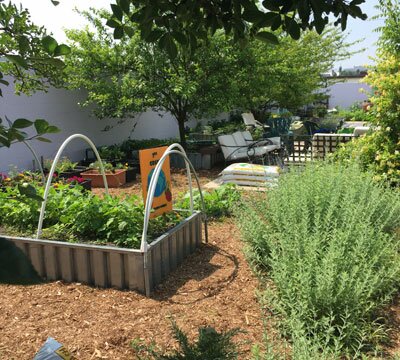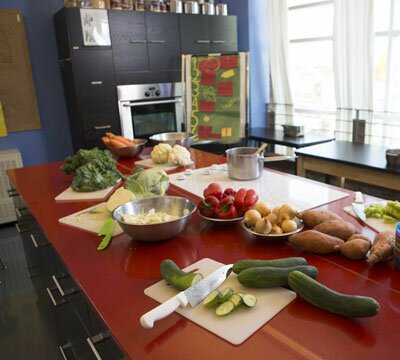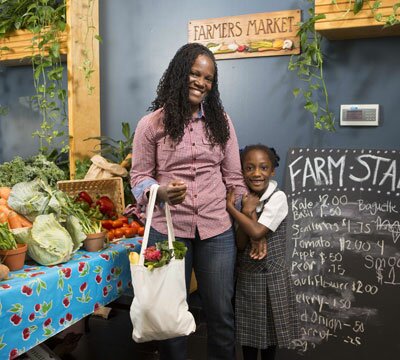One of the key learning environments, the garden, is used as a classroom to connect students with the natural world and the true source of their food. Here we integrate gardening activities in all subjects: Math, Science, Language Arts, Social Studies, Health/Physical Education, Art and Music, to address educational goals, especially personal and social responsibility.
School Garden —
Outdoor Learning Center

When students take part in the planting, caring for and harvesting of their food, they feel connected to it and take ownership of it. This is proven to increase their chances of eating more fruits and vegetables.
In conjunction with a family-style lunch program, students plant, cultivate, and harvest in a student run garden. The garden boasts multiple beds, including those specific to grade level curricula. In addition, a school garden provides a memorable space for discussion, art, movement, and classroom gathering.
The Benefits of Outdoor Learning

Students benefit from learning outdoors, while strengthening their healthy relationships with food.
In addition to the educational value of nature-based programming are the health benefits of getting outdoors.
- To improve mood and create happier students
- To enhance appreciation for the outdoors through interaction
- To increase retention rate for subject material
- To improve learning experiences for tactile and experiential learners
- To lower school violence and bullying, and to improve social skills
- To increase the understanding of complex ecological concepts
- To incorporate physical activity across subject areas
- To provide non-traditional classroom settings allowing teachers to engage various styles of learning
- To create community engagement
Components of a School Garden

The Garden provides an opportunity to get out of the traditional classroom setting allowing teachers to engage various styles of learning.
Whether it’s in a schoolyard, parking lot or a rooftop, when creating a school garden, here are some things to keep in mind…
- Create a community gathering space — This is where lessons can begin and end.
- Have at least one composting bin — A component of understanding the closed-food-loop cycle.
- Design grade level plots — so each grade can determine what to grow that ties into the classroom curriculum.
- Designate a tool area — Keep it organized and teach the lesson of “Leave No Trace.”
- Shade structures should be considered for very sunny spots — We all get hot and need a break.
- Remember plants’ reliance on water — Have hoses accessible and easy to move around.






